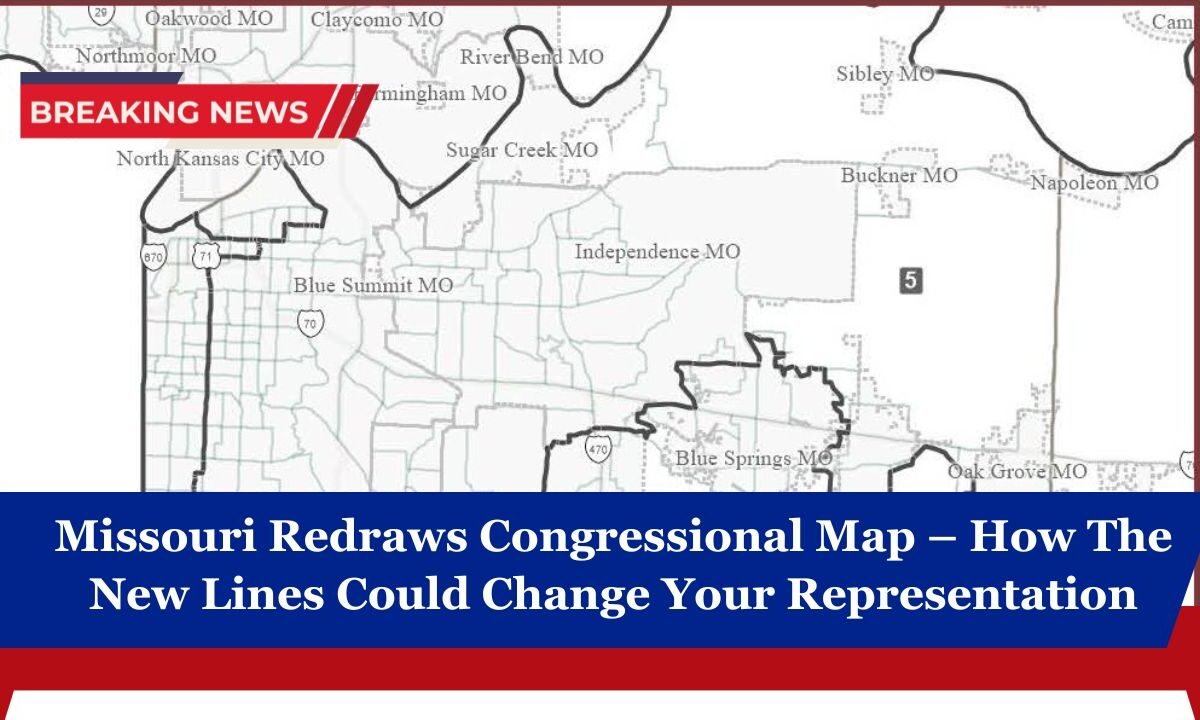The Missouri General Assembly has convened a special session in Jefferson City to redraw the state’s congressional districts.
This move is attracting statewide and national attention because of its potential to shift Missouri’s political balance in the U.S. House of Representatives.
While Missouri currently holds a 6–2 Republican majority, the proposed redistricting could change the breakdown to 7–1, making it far more difficult for Democrats to maintain influence.
So, what exactly is changing, and how could it affect your representation in Congress?
Why Missouri Is Redrawing Its Congressional Map
Typically, redistricting occurs after the U.S. Census every 10 years. However, Missouri lawmakers have called a special mid-decade session with a political focus: reshaping the 5th District, currently held by Democratic Rep. Emanuel Cleaver since 2005.
The intent is to divide Democratic voters in Kansas City and spread them across multiple Republican-leaning districts. This would reduce the concentration of Democratic support in the urban core and increase Republican dominance statewide.
At the same time, legislators are also considering initiative petition reform, which could raise the threshold for passing ballot measures, further reshaping Missouri’s political landscape.
Proposed Changes to Kansas City’s Representation
Under the new map, many Kansas Citians would find themselves in different districts:
| Area / Neighborhood | Current Representation | Proposed New Representation |
|---|---|---|
| Midtown & South Kansas City | Rep. Emanuel Cleaver (D-5) | Rep. Mark Alford (R-4) |
| North of Missouri River | Mix of 5th & 6th Districts | Rep. Sam Graves (R-6) |
| East Kansas City | Rep. Emanuel Cleaver (D-5) | Merged with Osage County, Jefferson City, and parts of Columbia |
This restructuring effectively splits Kansas City into multiple districts, reducing the voting power of Democratic strongholds and potentially shifting the state’s overall congressional makeup.
Broader Political Implications
- Shift to 7–1 Representation
If passed, the map would likely give Republicans seven of Missouri’s eight U.S. House seats, with Democrats holding only one. - Impact on Kansas City
The city’s traditionally Democratic base would be fractured, leaving residents represented by Republicans in districts that stretch far beyond the city limits. - National Political Strategy
The redistricting aligns with broader national strategies to maximize partisan advantage ahead of the 2026 elections.
Initiative Petition Reform
Alongside redistricting, lawmakers are discussing changes to ballot initiatives. Currently, a statewide majority is enough to pass a measure. The proposed change would require approval not only statewide but also in a majority of Missouri’s congressional districts.
This would make it harder for urban-driven measures—such as expansions of Medicaid or legalization of marijuana—to succeed if they fail in rural districts.
What This Means for Voters
- Your representative may change: Even if you don’t move, your neighborhood could end up in a different congressional district with a different representative.
- Policy focus may shift: Being merged into rural or suburban districts could mean less emphasis on urban issues like transit, housing, or local development.
- Your vote could carry less weight: By splitting Kansas City voters across multiple districts, their collective influence may be diluted.
Timeline and Next Steps
- Special Session: Currently underway in Jefferson City.
- New Map Proposal: Lawmakers aim to finalize a map before the 2026 election cycle.
- Legal Challenges: If passed, lawsuits challenging the map on grounds of gerrymandering are likely, though courts have historically been reluctant to intervene.
Missouri’s decision to redraw its congressional map marks a turning point for the state’s political future. With plans to split Kansas City into multiple districts and tilt representation toward a 7–1 Republican advantage, the stakes for voters are high.
Beyond redistricting, proposals to change the initiative petition process could also restrict direct voter influence on statewide policy.
For Missouri residents, the message is clear: your representation in Congress could change even if your address doesn’t. Staying informed, engaged, and prepared for the 2026 election cycle will be essential as these changes unfold.




